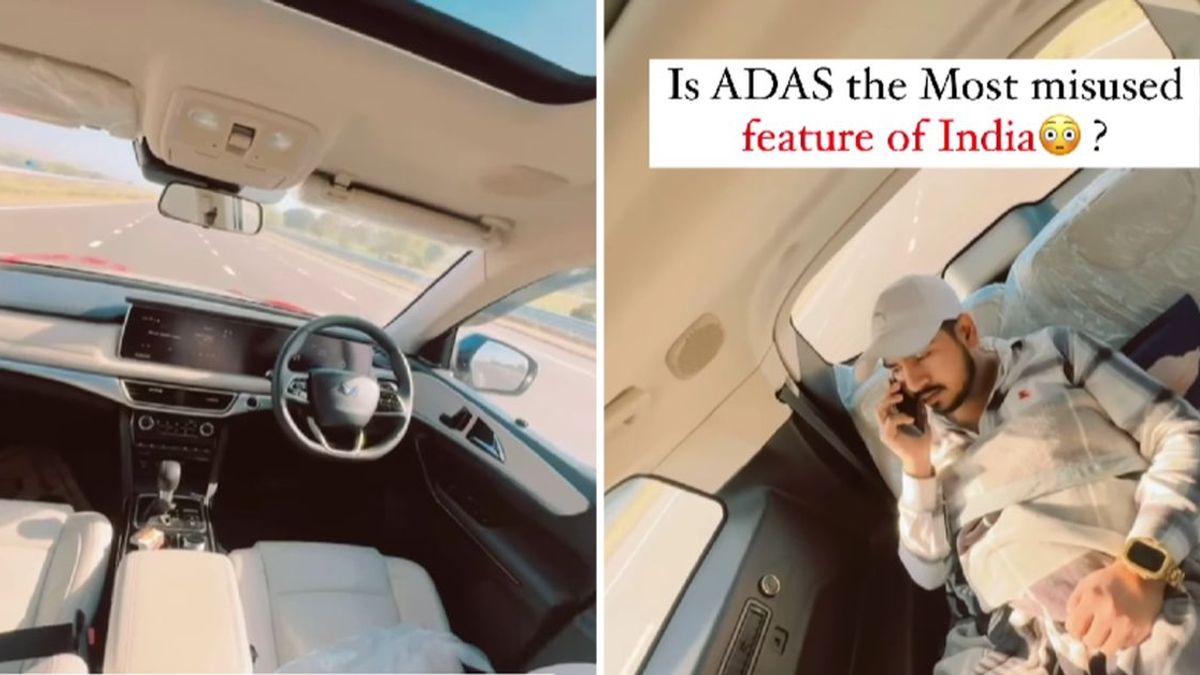
On a bustling highway, a driver finds a perilous comfort zone behind the wheel of a Mahindra XUV700. The vehicle, equipped with Level 2 Advanced Driver Assistance System (ADAS) features, becomes the unintended protagonist of a viral video that sends a chilling reminder about the misuse of automotive technology. Shared by Autojournal India on Instagram, the footage showcases a driver who has turned the rear seats into a bed, abandoning the steering wheel to the car’s Adaptive Cruise Control and Lane Keep Assist features. This incident, far from an isolated act of recklessness, ignites a critical conversation on the boundaries of technological assistance in vehicles and the paramount importance of responsible driving.
The Edge of Innovation and Irresponsibility
The Mahindra XUV700, celebrated for its blend of robust performance and cutting-edge technology, suddenly finds itself at the heart of a controversy. The SUV’s ADAS, designed to enhance driving safety and convenience, includes capabilities such as maintaining a set speed, managing the distance from the vehicle ahead, and keeping the car within its lane. However, the video in question starkly illustrates a dangerous misunderstanding of these systems. By converting the rear seats into a makeshift bed and leaving the car’s control systems unattended, the driver not only compromises their safety but also endangers other road users. This misuse starkly contrasts with the intended use of ADAS features: to supplement, not substitute, the driver’s control and vigilance.
The Consequences of Complacency
The allure of automation should not be mistaken for a license to abdicate responsibility. While the Mahindra XUV700’s ADAS offers a glimpse into the potential future of autonomous driving, it also underscores a critical distinction: current technologies are designed to assist, not replace, human drivers. The incident captured in the video serves as a potent example of how overreliance on these systems can lead to perilous outcomes. Industry experts and safety advocates swiftly condemned the behavior, emphasizing that such complacency could result in tragic consequences. The stark reality is that, despite advances in vehicle safety features, the driver’s role remains irreplaceable at the helm of decision-making and control.
Driving the Point Home
The viral video of the Mahindra XUV700 misuse has sparked a necessary dialogue on the ethical and safe use of ADAS technologies. Manufacturers and safety experts alike stress the importance of educating drivers about the capabilities and limitations of these systems. While the ADAS features represent significant strides towards reducing human error on the roads, they also require a heightened sense of responsibility from those behind the wheel. The incident not only highlights the potential hazards of misusing such technologies but also serves as a call to action for all stakeholders to foster a culture of safety and responsibility in the era of automated driving.
In the wake of the controversy, the conversation around the Mahindra XUV700 and its ADAS features transcends the specifics of a single incident. It beckons a broader reflection on our relationship with technology and the collective responsibility to use it wisely. As we navigate the evolving landscape of automotive innovation, the principles of caution, awareness, and accountability must steer our journey. The allure of technological convenience should never eclipse the paramount importance of safety. After all, the road ahead demands not only advanced vehicles but also, and more importantly, conscientious drivers.
